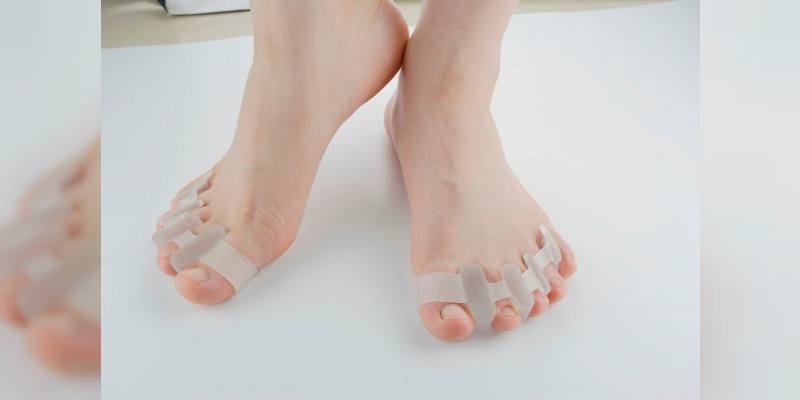Hallux valgus is a protrusion of the big toe. It is characterized by protruding inner part of the big toe. The actual problem is the extra space between first metacarpus and second metacarpus and slipping of metacarpus inward. Hallux valgus disease observed frequently today causes many symptoms and changes relating to the whole of the foot if it is not treated. It damages the appearance of the aesthetic appearance of the food and causes pain.
Causes of Hallux Valgus
One of the most important causes of hallux valgus is using high-heel and pointy-toed shoes. Excess use of such shoes which are not suitable for human anatomy applies pressure to the foot. Such shoes affect the physiology of the foot causing change in normal foot position. Hallux valgus develops slowly as the bone or soft tissue dislocate by time. Those who have excess weight and stand for a long time may have hallux valgus symptoms. Another important cause is genetic factors. It is important to have a familial history of hallux valgus. Some patients state that they never use high heels. In this case, genetic factors may be definitive.
Hallux valgus is observed in middle and advanced age women. While researching the cause, foot structure, genetic factors, systematic diseases, and muscle-nerve diseases should be examined together or separately as well as type of shoes. It should be noted that definitive reason is not known.
Symptoms of Hallux Valgus
- Physiological change in the foot,
- Severe pain, redness and burning in the protruding part of the big toe (bunion),
- Numb,
- Placement of the big toe on the second toe,
- Joint inflammation in advanced stages,
- Difficulty in wearing shoes and walking as deformation increases,
- Callosity
Diagnosis of Hallux Valgus
In the diagnosis of hallux valgus first symptom of which is protruding big toe, the situation of the patient is examined in detail. Complaints of the patient vary from a focused pain to shoes wearing problems. In the examination, the patient is inspected while sitting and standing. Structure of the foot, deformation severity in the big toe, structural deformities in other toes are evaluated. The treatment to be applied is determined by evaluating shape and size of the protrusion. The method to be used for final diagnosis is x-ray taken while standing. Generally, another diagnosis method is not required. Sometimes, MRI can be performed.
Treatment of Hallux Valgus
Treatment of the hallux valgus is depending on the severity of the disease. While surgical treatment is required for patients with advanced-stage, for early stages conservative treatment is applied. Conservative treatment reduces symptoms and deformity rather than correcting deformity. It is recommended to choose wide-toed and soft shoes in which toes can relax. Such shoes reduce complaints. To reduce the symptoms, interdigital roller, hallux valgus splint, and bunion bags are used.
In surgical treatment, it is aimed to remove the protruding part of the big toe and preserve joint movements and functions. As there are different types of hallux valgus, each surgical treatment is different depending on the type. Bone, tendon and ligaments and nerves are placed and the node is removed. Most of the operation is carried out under local or general anesthesia. The recovery period after the operation varies depending on severity of the disease, age of the patient and activity level. If performed surgical operation is successful, recurrence risk of the disease is low.
Non-surgical methods used in the treatment of hallux valgus are not beneficial for correcting shape deformations. Complaints such as pain can be stopped, reduced and the patient can sleep at night easily. When we apply night splint and interdigital roller to the patients, patients state that complaints are reduced. When we do not see the patients for a long time, we estimate that complaints are reduced or stopped. However, after a while they may apply us again as non-surgical treatments do not affect. In other words, non-surgical methods are used to decrease the complaints and to postpone the surgery. Definite treatment is surgery. No doubt that it should be determined to perform non-surgical or surgical treatment methods.
After the Surgery of Hallux Valgus
The post-op period is very important for the patient. There are some points to pay attention to prevent recurrence of the disease and to accelerate recovery process. First of all, the patient should not move except for needing and the foot should be rested. In this period, shoes designed special for the patient should be chosen and swelling of the foot can be prevented. The disease recovers within 2-6 weeks depending on the operation and severity of the disease. Comfortable and orthopedic shoes should be preferred and recurrence of the disease is prevented.








